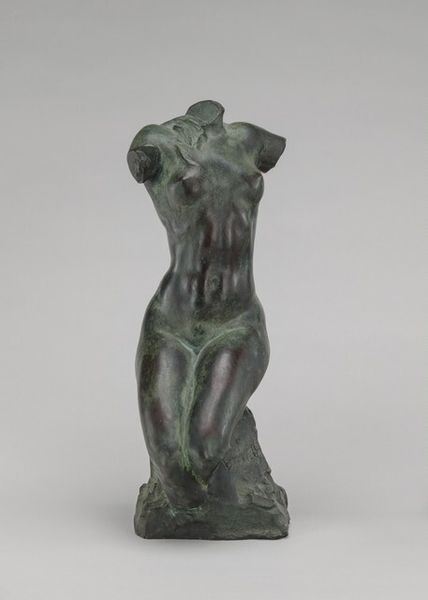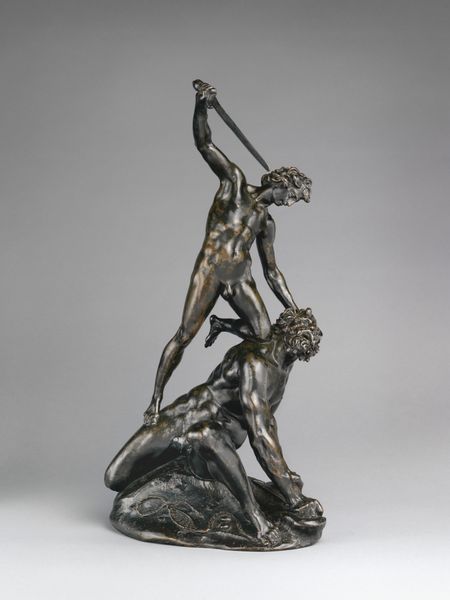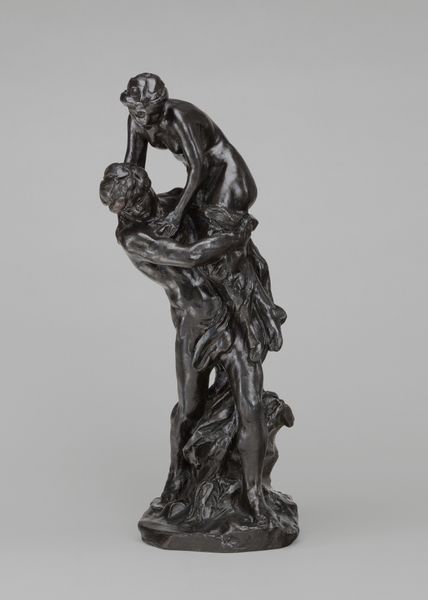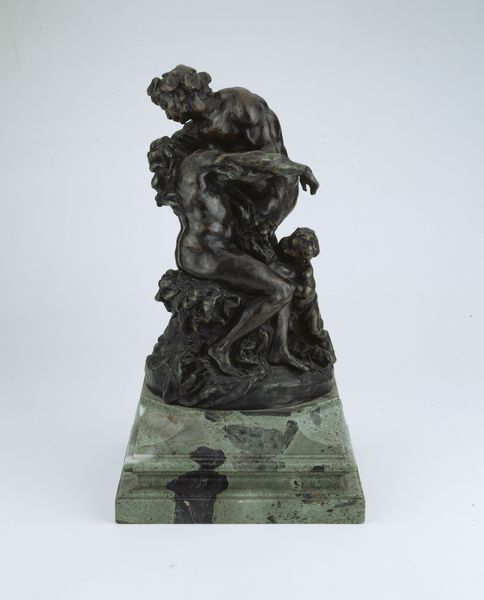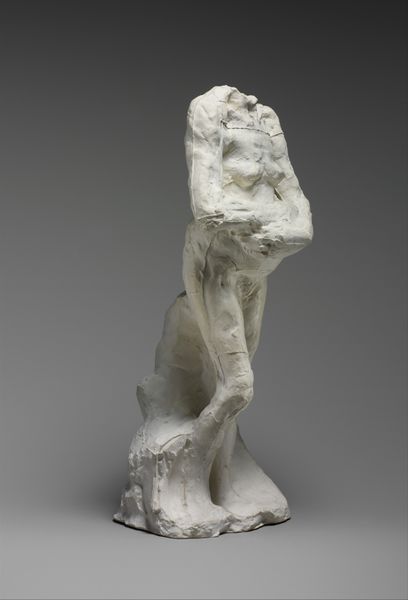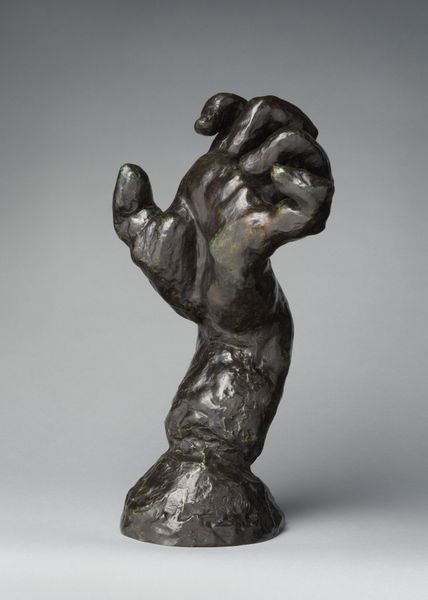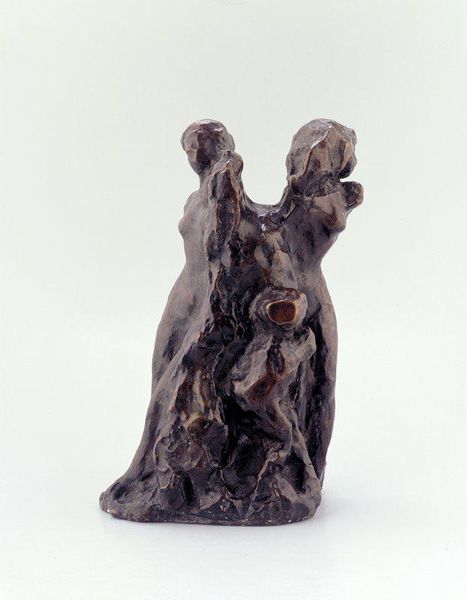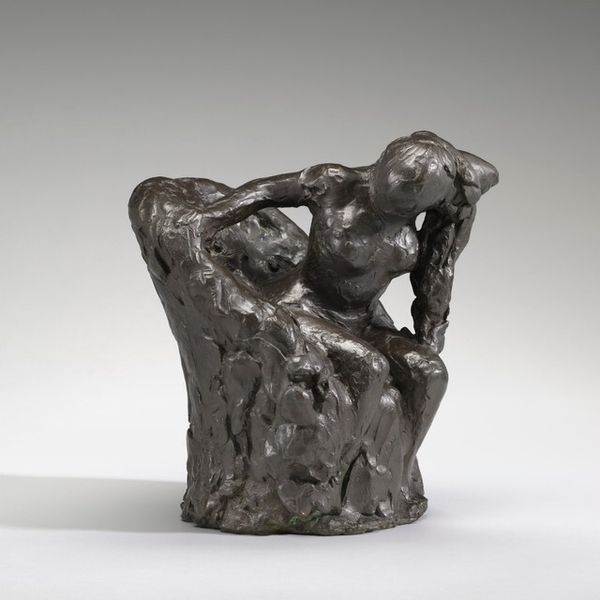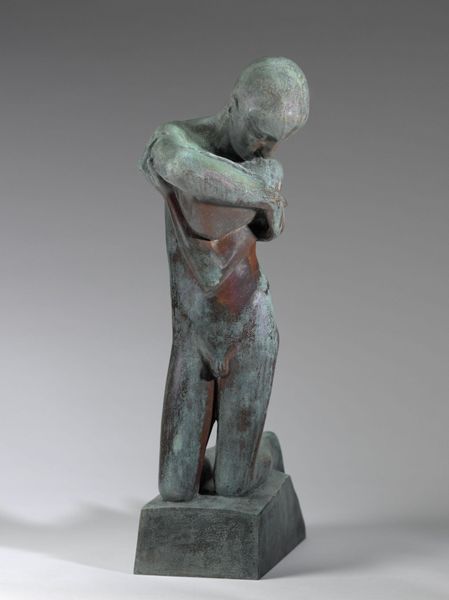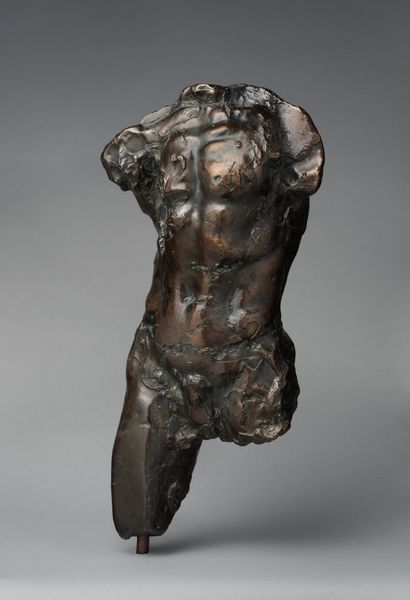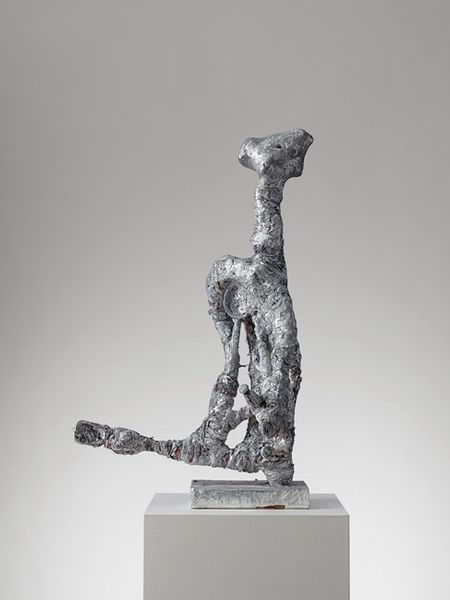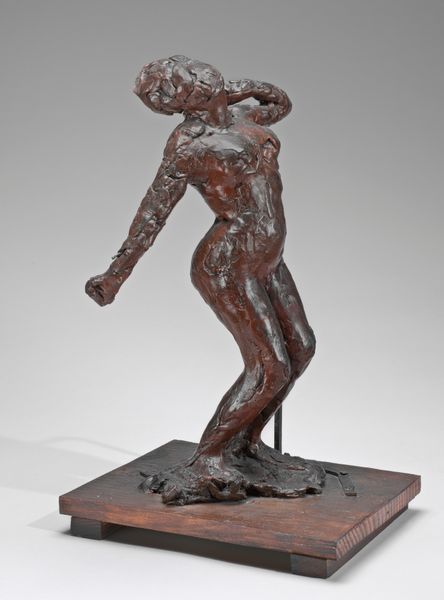
bronze, sculpture
#
sculpture
#
bronze
#
figuration
#
sculpture
#
symbolism
#
nude
Dimensions: 39.5 x 38.0 x 28.0 cm
Copyright: Public Domain
Editor: Here we have Rodin’s "Faun," likely created before 1912, cast in bronze. The sculpture presents this… dynamic pairing. What jumps out to me is the raw, almost unfinished texture of the bronze itself. What can you tell me about this piece? Curator: The roughness, that surface, is everything. Consider bronze as a material; what does its historical context tell us? Rodin, with his conscious manipulation of the casting process, elevates the labor inherent in the process to something central, resisting academic notions of finish. Editor: So, the visible texture isn't a flaw, but a deliberate choice? It disrupts the smooth ideal often associated with bronze sculpture. Curator: Precisely. How does it affect your reading of the mythological subject matter – this supposed Faun? We see the traces of Rodin's hand – his physical interaction with the clay from which this bronze originated. The making, the doing is now part of what it *is.* Editor: So, he’s using the inherent qualities of bronze and the act of sculpting itself to create a new kind of symbolism…not just representing a myth, but reflecting on how art is *made.* Curator: Exactly. What implications does this have? It also challenges the notion of sculpture being separate from craft. Editor: I guess it really pushes me to reconsider what sculpture can be about: labor, the hand of the artist, not just ideal forms. I will never see a bronze statue the same way now. Curator: And that material understanding can be the start of much bigger connections. How making impacts meaning.
Comments
stadelmuseum about 2 years ago
⋮
His arms stretched out disarmingly, the faun abandons himself to the caresses of the little female faun as she gazes dreamily at him. In a reversal of the classic gender roles, the mythological hybrid creature of antiquity and the epitome of sexual drive is dominated by his companion. As a couple they look inorganic; the delicate woman is simply placed on the monstrous faun's goat-like leg. Here, Rodin has arranged two individual figures created for his 'Gates of Hell' to form a new group. Liberated from their original context, his sculptures acquired the status of autonomous artworks.
Join the conversation
Join millions of artists and users on Artera today and experience the ultimate creative platform.
